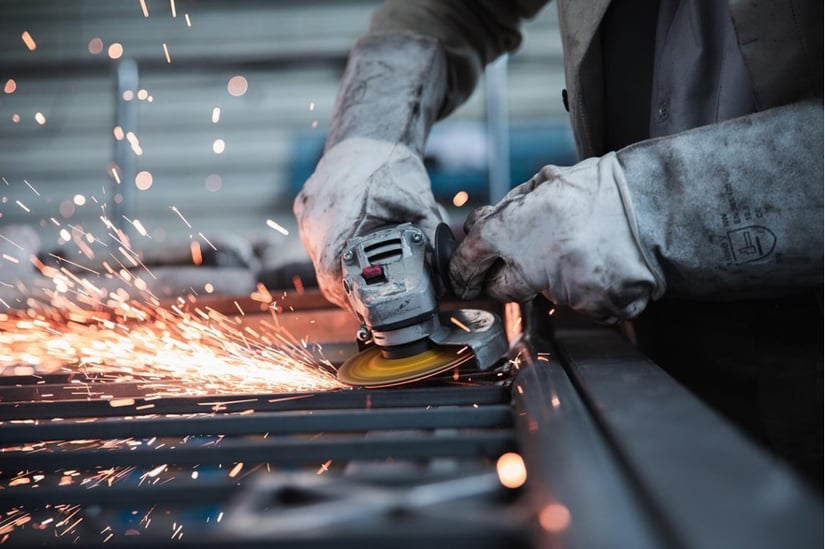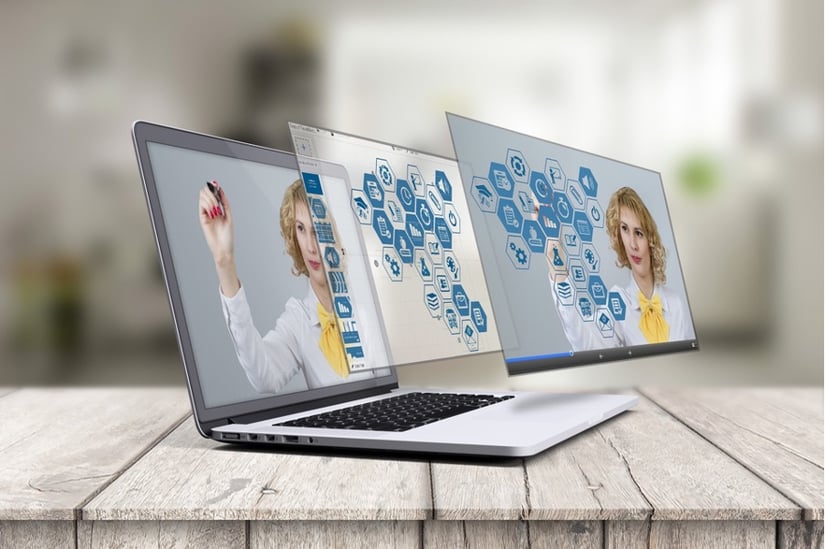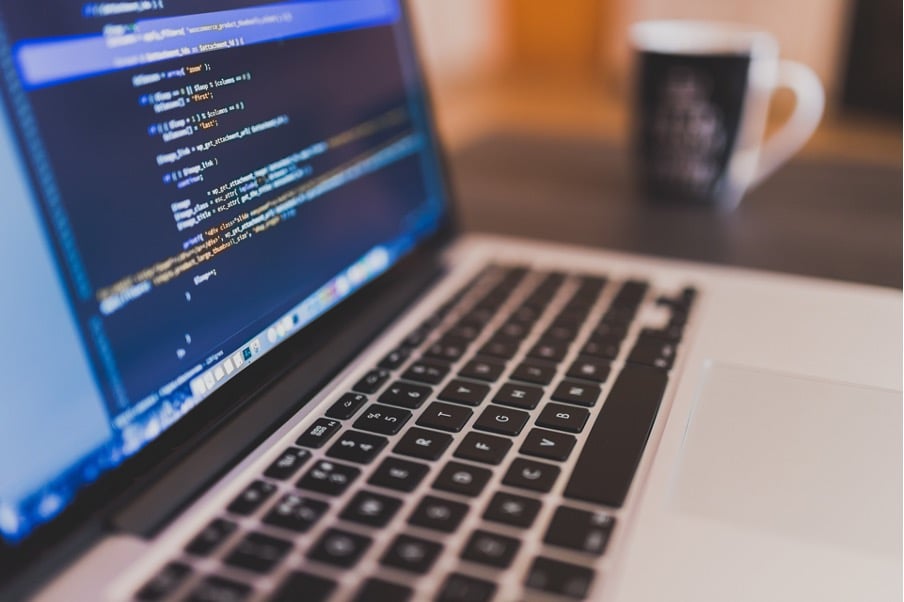igital twin is a technology that collects data from physical space using digital technology and reproduces the real world in virtual space “like a twin”. By using technologies such as AI and IoT, we will simulate the future by acquiring data on places, people, things, etc. and reproducing them in virtual space.
In this article, we will introduce digital twins in detail, including their advantages and case studies.

INDEX
- What is a digital twin
- Differences between Digital Twin, Simulation, and Metaverse
- 5 Benefits of Digital Twins in Manufacturing
- Use cases for digital twins in the manufacturing industry
- Services that make use of digital twin | What is the supply chain optimization (SCO) service provided by Hitachi?
- Technologies used in digital twins
- Introduction of Digital Twin | Two Challenges
- Future Prospects of Digital Twins
- summary
What is a digital twin

Digital twins have been introduced in various industries, but are said to be particularly effective in the manufacturing industry. For example, by using digital twins to collect and analyze data related to trouble in real time, it is possible to quickly improve the cause. In addition, by reflecting the usage status in the virtual space and accumulating data, it becomes easier to improve the product. In this chapter, we will explain in detail what a digital twin is.
A digital twin is a technology that creates a copy of the real world in a virtual space
Digital twins are one of the hottest technologies in the manufacturing industry. This technology can reproduce physical elements such as products and equipment in the real world in a virtual space.
The introduction of this technology has many advantages, but the major point is that it is possible to improve the efficiency and productivity of the equipment. Specifically, it helps prevent troubleshooting and maintenance on production lines. It can also be used for product quality control and new product development.
Ministry of Internal Affairs and Communications’ Digital Twin Efforts
The Ministry of Internal Affairs and Communications is promoting the construction of digital twins for facilities and buildings of local governments. This initiative is expected to enable disaster response and efficient facility management.
In the manufacturing industry, in addition to optimizing the manufacturing process, it can be used in various aspects such as quality control and new product development. Therefore, the digital twin will become an increasingly important technology in the manufacturing industry in the future. It is also expected to contribute to improving the efficiency of society as a whole through its use in the public sector, as in the efforts of the Ministry of Internal Affairs and Communications.
Differences between Digital Twin, Simulation, and Metaverse

Some people may be confused because there are many similar concepts such as digital twins, simulations, and metaverses. From here, I will explain the difference between the digital twin and each other concept.
How is it different from simulation?
Simulation refers to reproducing what is happening in the real space in another place. Digital twins, on the other hand, are a method of simulation, but the difference is that they are in real time. A digital twin can be reproduced in real time in a virtual space. As a result, the situation in the real space can be grasped instantaneously with high accuracy, enabling appropriate simulations.
For example, digital twins can be used to simulate driving in automobile manufacturing. Digital twins can be used to optimize product design and manufacturing processes before the actual vehicle is built. It is also possible to improve productivity by simulating the settings and operation methods of production line equipment.
How is it different from the metaverse?
Digital twins can be used efficiently in product development, manufacturing, and maintenance by creating physical models of products and processes and simulating their actions and behaviors in a digital space that faithfully reproduces the real world. . On the other hand, the Metaverse is a virtual space that does not necessarily match the real world and is used for various purposes such as business and entertainment.
In the manufacturing industry, the Metaverse is used in a variety of ways, such as virtual design and simulation of products on the Metaverse, and real-time simulation of manufacturing lines by building a digital twin factory on the Metaverse.
5 Benefits of Digital Twins in Manufacturing

Digital twins are bringing five benefits to the manufacturing industry:
- Improve production efficiency
- Strengthening quality control
- Reduced development costs
- Enabling on-demand production
- Supply chain optimization
Advantage 1. Improved production efficiency
With the introduction of digital twins, it is possible to create highly accurate virtual models of production lines in a short period of time and design optimal production processes. As a result, it is no longer necessary to repeat the conventional trial-and-error improvement work, which can be expected to improve production efficiency. In addition, since the entire production line can be grasped, it leads to smooth cooperation between processes and automation of work.
Advantage 2. Strengthen quality control
With the introduction of digital twins, it is possible to create and simulate virtual models of products and manufacturing processes. This makes it possible to detect abnormal values and defective parts in quality control and respond early. In addition, quality control work that traditionally required on-site observation and measurement can be performed more quickly and accurately with the introduction of digital twins.
Advantage 3. Development cost reduction
Utilizing digital twins can reduce the number of prototypes and prototypes required for product development. In addition, by simulating product design and production processes, problems in the development stage can be detected early and improved. This will allow us to reduce development costs.
Advantage 4. Realization of on-demand production
Leveraging the digital twin enables fast and flexible on-demand production. In conventional manufacturing, production lines were often designed for mass production, so small-lot product production and customized production tended to take time and cost. However, by using a digital twin, it is possible to virtually reproduce product design and manufacturing processes, making it possible to make design changes and optimize production lines quickly and easily. As a result, we are now able to respond to small lots and customized production, and to respond more flexibly to customer needs.
Advantage 5. Supply chain optimization
The digital twin can be used to optimize the supply chain. The supply chain is the flow from the procurement of raw materials to the shipment of products, and is a complex process involving many factors such as production lines, logistics, and inventory.
By using digital twins, data on each element can be collected and virtually reproduced, making it possible to improve the efficiency of the entire supply chain, such as optimizing inventory and optimizing production lines. In addition, visualization of logistics and inventory will improve the accuracy of demand forecasting and inventory management, which will lead to cost reduction.
Use cases for digital twins in the manufacturing industry

Various companies in the manufacturing industry are using digital twins. When actually introducing a digital twin, it is a good idea to refer to case studies. It is possible to compare the points that can be incorporated in your company in the future with a specific plan.
Toyota|Used for demonstration experiments in smart cities
Toyota Motor Corporation is currently using digital twins for demonstration experiments in smart cities. We are aiming to build a smart city where automobiles, energy, buildings, etc. are linked, and digital twins reproduce facilities such as vehicles and energy systems in virtual space and are used for simulations. Based on this result, we were able to work on the development of self-driving cars and improve Toyota’s technological capabilities.
Renault|Used to streamline the vehicle development process
Renault uses digital twins to streamline the vehicle development process. The use of digital twins has made it possible to perform verification and evaluation in virtual space during the product development process.
Specifically, we use 3D digital twins to consistently manage product development, manufacturing, and maintenance. This makes it possible to optimize the design and production line, contributing to shortening the development period and reducing costs.
Daikin |
Daikin Industries is using digital twins to realize a “non-stopping factory” (a factory that minimizes stagnation of production lines). Using digital twins, we are working to predict and improve production line stagnation and improve production efficiency. We reproduce the state of manufacturing equipment and assembly work in a virtual space, and monitor and troubleshoot the production line.
It can be said that the introduction of the digital twin minimizes downtime of the production line and improves productivity.
DENSO|Used to realize MaaS
DENSO is working to realize MaaS (Mobility as a Service) services by utilizing digital twins. Specifically, the purpose is to improve customer satisfaction by providing appropriate services based on vehicle driving data and customer information. The use of digital twins enables more efficient vehicle management, leading to the provision of MaaS services.
Services that make use of digital twin | What is the supply chain optimization (SCO) service provided by Hitachi?

In the manufacturing industry, digital twins are attracting attention as a technology for optimizing supply chains and improving production efficiency. The supply chain optimization (SCO) service provided by Hitachi uses digital twins to improve efficiency, reduce costs, shorten lead times, optimize inventory, and improve customer service in the supply chain. The point that attracts attention is that it is possible to simulate “production, distribution, and sales” as a set, not just production or distribution alone.
Specifically, the entire product cycle is reproduced as a digital twin, and optimization is achieved in all processes, including product design, manufacturing, sales, and after-sales service. In addition, by collecting information related to product inventory and logistics in real time and performing simulations on the digital twin, it is possible to improve the efficiency of the supply chain and reduce costs.
Technologies used in digital twins

Digital twins in the manufacturing industry use IoT, AI, 5G, VR, etc. to improve production processes.
[IoT] for data collection
IoT is a technology mainly for collecting data in digital twins. By attaching cameras and sensors to machines and products on the manufacturing line, you can collect real-time product status and production process data from factory facilities and equipment. As a result, it can be used in a wide range of applications such as product quality control and production process optimization.
For example, food manufacturers use IoT to collect data such as product temperature, humidity, and vibration in real time to ensure product quality.
With the introduction of IoT, work that was previously performed manually can be automated and efficient production processes can be realized.
[AI] for data analysis
AI is a technology that collects and learns collected data and performs advanced data analysis to identify problems and propose improvement measures. By analyzing the data collected by IoT, it is possible to optimize the production process and predict problems.
For example, there are cases where AI is used to analyze production line data, predict the occurrence of defective products in advance, and respond to them, leading to improved efficiency and quality of the production line. The introduction of AI can significantly reduce the time it takes to analyze data and solve problems.
[5G] for sending and receiving data in real time
5G is a next-generation communication standard that enables high-speed and stable communication, and is a technology for advanced data analysis. In the manufacturing industry, equipment, robots, sensors, etc. in factories may need to send and receive data in real time. Utilizing 5G will enable high-speed and stable communication, enabling remote control of equipment and advanced automation.
For example, we have successfully reduced the number of workers by remotely operating an offshore oil field using 5G. The introduction of 5G will enable rapid response in terms of product quality control and production line optimization.
[VR] for visualizing digital space
VR is a technology that enables more effective decision-making, such as digital twin simulation and troubleshooting, by visualizing digital space. In the manufacturing industry, facilities and processes in factories can be reproduced in 3D space and visually confirmed.
For example, it is possible to use VR to simulate the design and layout of equipment in a factory, leading to improved productivity and a reduction in personnel. Troubleshooting that previously required manual work on site will also be able to be done remotely.
[Blockchain] for storing data safely and transparently
Blockchain is a digital technology that uses distributed ledger technology to store information securely and transparently and prevent tampering. Multiple computers distributed on the network approve transaction information and data, and store them in a chain-like data structure that connects groups of data called blocks to prevent tampering with information.
Also, since it resides on a network, there is no centralized administrator. As a result, security and reliability are high, and it is used in various fields. It is known that it is mainly used for cryptocurrency transactions, but it is a technology that is expected to be applied in many other fields, such as contract automation, voting systems, and supply chain management.
Introduction of Digital Twin | Two Challenges

Digital twins are a revolutionary technology in the manufacturing industry, but there are some challenges in implementing them. Among other things, let’s consider the balance between deployment costs and increased ROI and security challenges.
Balance between introduction cost and ROI improvement
Deploying a digital twin can be expensive. Therefore, when a company decides to introduce it, it is necessary to consider the balance between the introduction cost and ROI (Return On Investment). On the other hand, the introduction of digital twins makes it possible to improve productivity, improve quality, and detect failures at an early stage.
Security issue
With the introduction of digital twins, security issues have also come to the fore. Digital twins enable real-time monitoring of products and systems, making them a potential target for hackers and cyberattacks.
Future Prospects of Digital Twins

In the manufacturing industry, where digital twins are attracting attention, collaboration between digital twins and the Metaverse is expected in the future. In addition, the impact that future technological progress will have on the manufacturing industry is also a big topic.
Linking Digital Twins and the Metaverse
The reason why the digital twin and metaverse are expected to work together is that large-scale simulations that cannot be realized in the real world can be performed in the virtual space. Since the real space can be virtually reproduced in the Metaverse using digital twin technology, it is expected to enable a realistic product experience.
For example, by linking detailed product design information from digital twins with displays and operability in virtual space from the metaverse, it will be possible to improve product design and performance more quickly and accurately.
Future technological progress and its impact on the manufacturing industry
As for the impact that future technological progress will have on the manufacturing industry, the evolution of technologies such as AI, IoT, blockchain, and 5G is expected to improve productivity, quality control, and supply chains in the manufacturing industry.
For example, automation using AI will improve the efficiency of the manufacturing process and quality control, and blockchain will improve the transparency of the supply chain, which will improve the efficiency of the entire supply chain. can.
summary

In the future, it is expected that the manufacturing industry will be able to provide more efficient and high-quality products more quickly due to the collaboration between the digital twin and the metaverse, and the evolution of technologies such as AI, IoT, blockchain, and 5G. However, it is also necessary to respond to new challenges and risks arising from technological progress, and it is important for the manufacturing industry to continue to respond to technological evolution and achieve sustainable growth.
